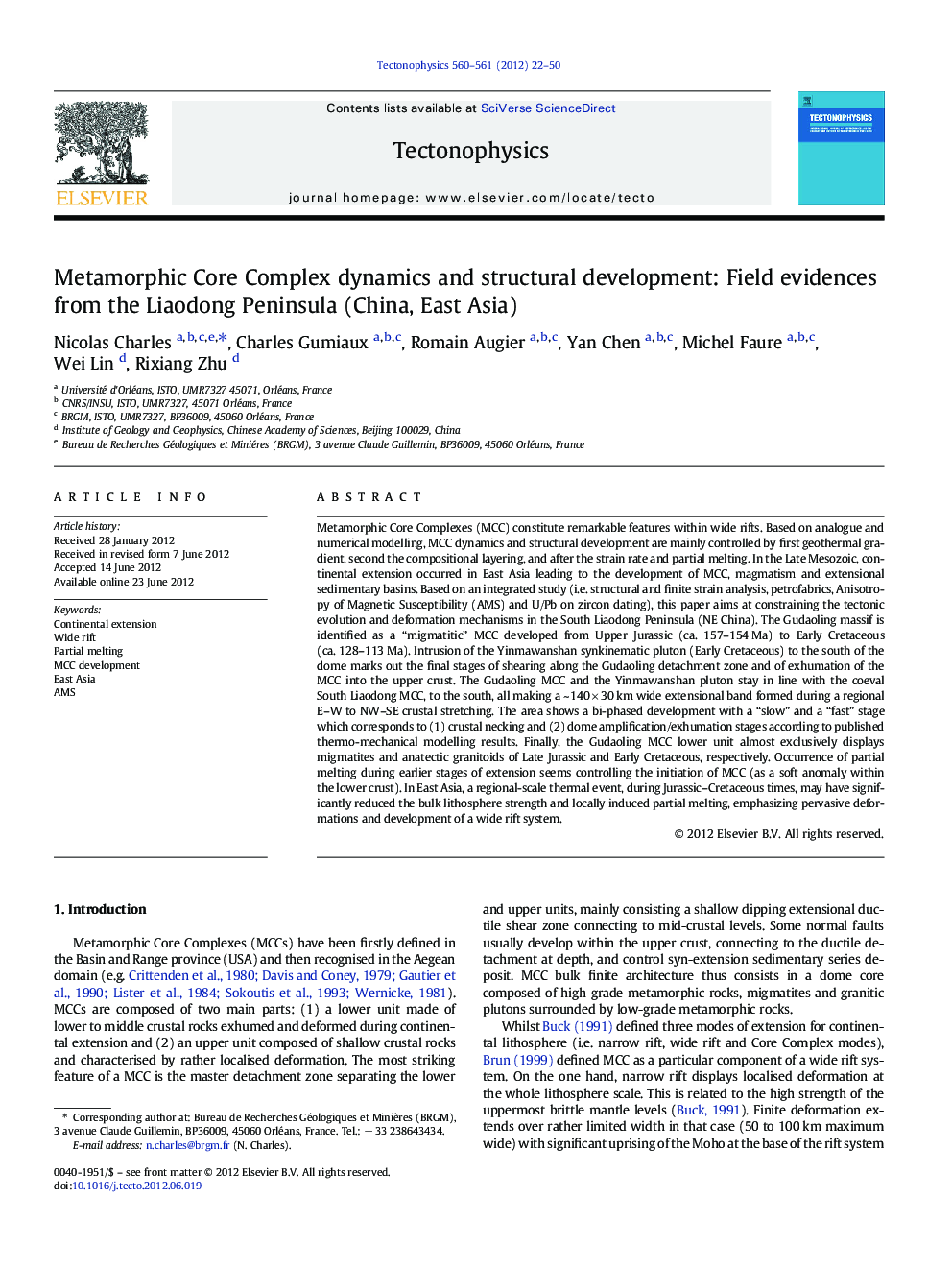| کد مقاله | کد نشریه | سال انتشار | مقاله انگلیسی | نسخه تمام متن |
|---|---|---|---|---|
| 4692770 | 1636816 | 2012 | 29 صفحه PDF | دانلود رایگان |

Metamorphic Core Complexes (MCC) constitute remarkable features within wide rifts. Based on analogue and numerical modelling, MCC dynamics and structural development are mainly controlled by first geothermal gradient, second the compositional layering, and after the strain rate and partial melting. In the Late Mesozoic, continental extension occurred in East Asia leading to the development of MCC, magmatism and extensional sedimentary basins. Based on an integrated study (i.e. structural and finite strain analysis, petrofabrics, Anisotropy of Magnetic Susceptibility (AMS) and U/Pb on zircon dating), this paper aims at constraining the tectonic evolution and deformation mechanisms in the South Liaodong Peninsula (NE China). The Gudaoling massif is identified as a “migmatitic” MCC developed from Upper Jurassic (ca. 157–154 Ma) to Early Cretaceous (ca. 128–113 Ma). Intrusion of the Yinmawanshan synkinematic pluton (Early Cretaceous) to the south of the dome marks out the final stages of shearing along the Gudaoling detachment zone and of exhumation of the MCC into the upper crust. The Gudaoling MCC and the Yinmawanshan pluton stay in line with the coeval South Liaodong MCC, to the south, all making a ~ 140 × 30 km wide extensional band formed during a regional E–W to NW–SE crustal stretching. The area shows a bi-phased development with a “slow” and a “fast” stage which corresponds to (1) crustal necking and (2) dome amplification/exhumation stages according to published thermo-mechanical modelling results. Finally, the Gudaoling MCC lower unit almost exclusively displays migmatites and anatectic granitoids of Late Jurassic and Early Cretaceous, respectively. Occurrence of partial melting during earlier stages of extension seems controlling the initiation of MCC (as a soft anomaly within the lower crust). In East Asia, a regional-scale thermal event, during Jurassic–Cretaceous times, may have significantly reduced the bulk lithosphere strength and locally induced partial melting, emphasizing pervasive deformations and development of a wide rift system.
► MCCs are the most remarkable evidences for extension within wide rift systems.
► East Asia is considered as a wide rift system during late Mesozoic to Cenozoic times.
► Field evidences confirm numerical modelling results for MCC dynamics and development.
► In East Asia, during Jurassic–Cretaceous times, a regional-scale thermal event occurred.
► Thermal conditions favoured partial melting involving local soft anomaly favouring MCC initiation.
Journal: Tectonophysics - Volumes 560–561, 17 August 2012, Pages 22–50